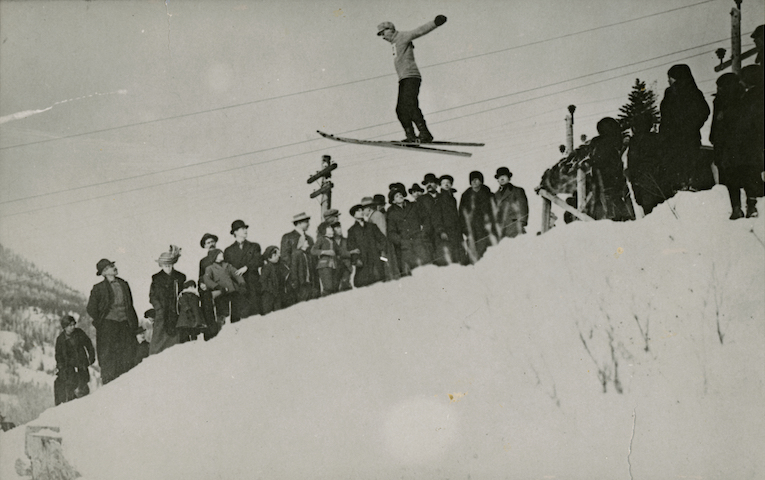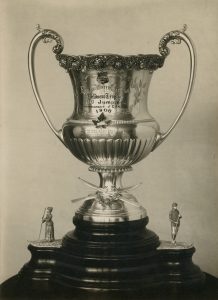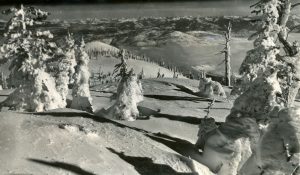The Rossland Winter Carnival
Winter Carnival
Rossland celebrated the winter season by staging a major community spectacle called the Winter Carnival. Since it began in February 1898, this famous event fueled the ski spirit in Rossland. It provided locals the opportunity to watch and participate in ski tournaments. For the first Winter Carnival, Olaus Jeldness and the ski club planned events for amateur competitors, junior boys, and novices. Over the years, the main skiing attractions were the ski running and jumping competitions, which Rosslanders unabashedly declared “Championships of Canada.” These events often occurred on Red Mountain or Monte Cristo Mountain. However, the specific routes would change from year to year to accommodate the spectators and attempts to break records. At the first Winter Carnival, the ski-running course went from the summit of Red Mountain to the Black Bear Mine compressor. It crossed a distance of 2.4 kilometres (1 ½ miles) with a descent of 610 metres (2000 feet). The ski-jumping competition was on Monte Cristo Mountain at the head of Washington Street.
Jeldness dominated the Winter Carnival, winning both skiing events three years in a row from 1898 to 1900. As a result, he became the permanent owner of the Macintosh Trophy for ski-running and the War Eagle Trophy for ski-jumping. He retired from competing in the Winter Carnival after 1900 and moved to Spokane, USA. He did, however, remain a supporter of the Winter Carnival for years to come. During the 1908 Winter Carnival, for example, he graciously donated the Jeldness Cup for the ski-jumping competition.
While Jeldness and the ski club initially focused on organizing events for male competitors, it was not long before women could also participate. During the 1904 Winter Carnival, the ski club organized the first female-specific ski-running race, in which Florence Wilson placed first. From then on, the Winter Carnival committee occasionally included women’s ski-running events. Women were excluded from entering the ski-jumping competitions.
Torgal Noren: A Legend on the Hill

Rossland Miner, February 16, 1905. View a transcript (EN).
Record breakers were a source of inspiration for Rossland’s budding ski community as they pushed the boundaries of the sport. After Olaus Jeldness left Rossland, it was not long before the town got a new champion: Torgal Noren, another Norwegian ski jumper. From 1904 to 1909, he triumphantly won every ski running and jumping event, except for the 1906 ski-running race where he placed 4th due to an illness. He also wowed spectators by breaking ski jumping records time and time again. In his first competition, he jumped 22.45 metres (73 feet and 8 inches). The Rossland Miner boldly declared this jump the “biggest leap ever made in Canada.” Noren’s longest jump in Rossland was during the 1908 Winter Carnival, where he leapt 31.59 metres (103 ft and 8 inches) in an exhibition jump after the regular competition.
1920s: The Downturn of Skiing
After almost two decades, the Winter Carnival was stopped in 1918 when public gatherings were banned due to the 1918 influenza pandemic, commonly called the “Spanish flu.” The Carnival remained dormant during the Interwar period until 1947. Throughout this time, skiing’s prominence in the community dwindled. The local newspapers were no longer reporting anything to do with skiing. This likely meant ski clubs no longer held ski races or organized work parties to maintain jump and running courses. It would be at least a decade before skiing experienced a resurgence in Rossland.




